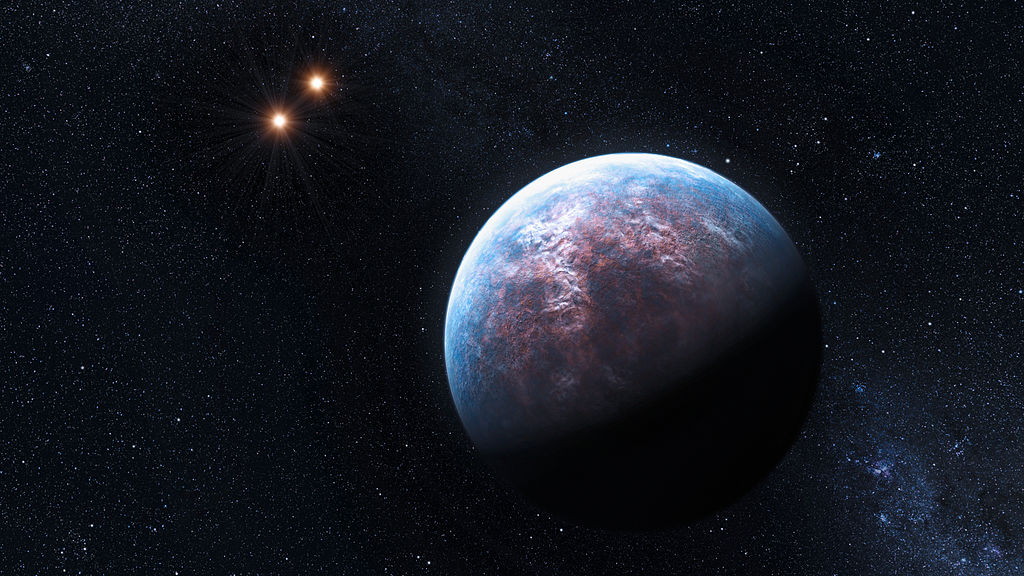It looks like you're using an Ad Blocker.
Please white-list or disable AboveTopSecret.com in your ad-blocking tool.
Thank you.
Some features of ATS will be disabled while you continue to use an ad-blocker.
11
share:
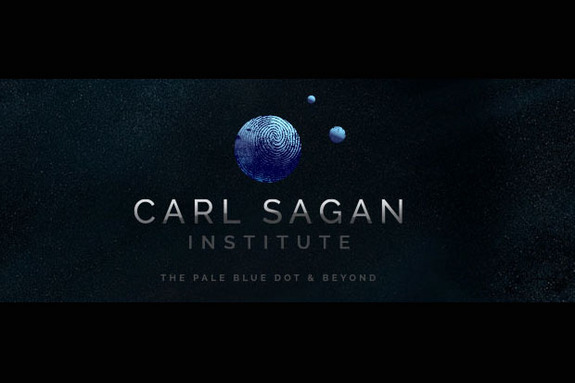
In my posts here, I have often referred to material from the Institute for Pale Blue Dots at Cornell University in Ithaca, NY. Well today the Institute for Pale Blue Dots was renamed the Carl Sagan Institute to explore "Pale Blue Dots and Beyond" in a ceremony where Carl Sagan's wife Ann Druyan spoke. Druyan was co-author of the book Contact which the movie featuring Jodie Foster was based on.

Our Earth, as a pale blue dot as seen from NASA's Voyager spacecraft when it was 3.8 billion miles from Earth.
As you might expect the institute is dedicated to advancing the search for life in the universe.
From Space.com:
An institute dedicated to searching for alien life in the cosmos has been renamed in honor of the late astrophysicist and science popularizer Carl Sagan.
Cornell University's Institute for Pale Blue Dots has been renamed the Carl Sagan Institute: Pale Blue Dots and Beyond to honor the legacy of Carl Sagan. At an inaugural event for the institute held today (May 9) at Cornell, Sagan's wife and frequent collaborator, Ann Druyan, revealed the institute's new name.
"There's a meta quality to this day," Druyan said in a statement from the institute. "Honoring Carl by empowering interdisciplinary scientists to search for the answers to his most passionate scientific questioning, seeking to share that understanding with the public and finding in that knowledge to life-threatening dangers here on Earth — that's a multileveled and highly accurate reflection of who Carl was."
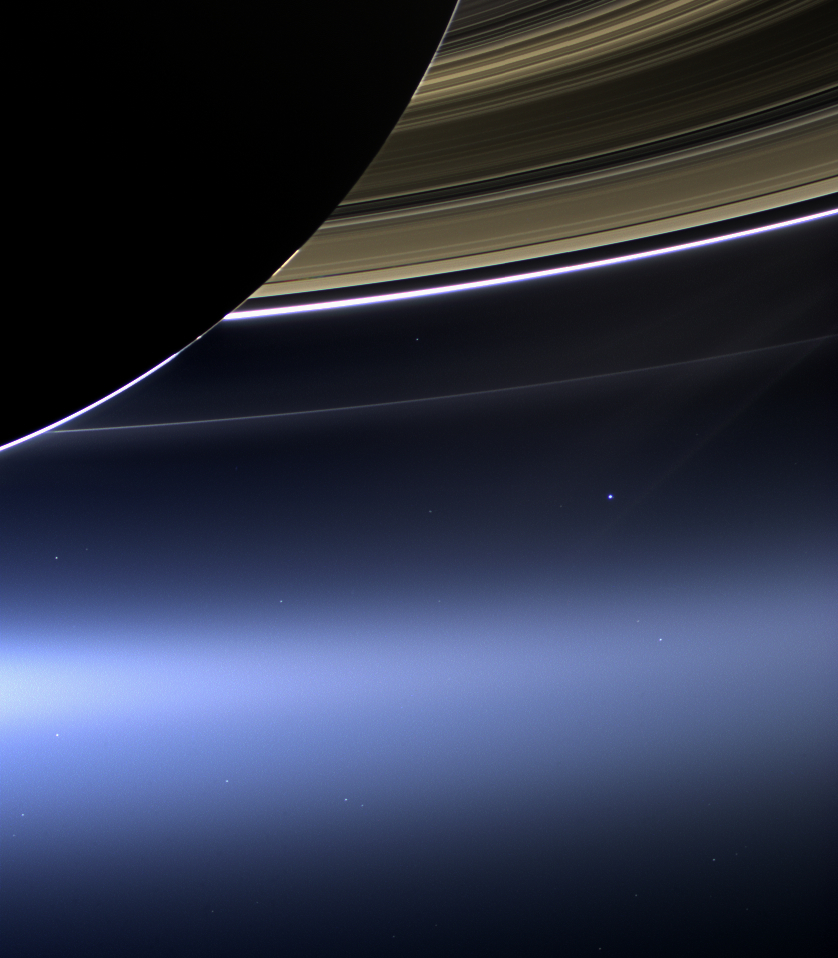
Our Earth, as a pale blue dot as seen from a more recent image taken by NASA's Cassini spacecraft as it orbits Saturn, 1.7 Billion miles from Earth. Near future space telescopes may soon show us other nearby pale blue dots, and perhaps detect life.
And this is perhaps one of the under appreciated aspects of Sagan's life. He was as much focused on life on Earth and our prospects for longevity as he was on the possibilities of what life might exist beyond Earth. The most important factor in the Drake Equation perhaps is "L" the length of time a technological civilization exists. To know ourselves and the dangers facing our survival we may have a better understanding of how prevalent other intelligent species are in our Galaxy.....

Continuing....
"From the moment I first met astrophysicist Lisa Kaltenegger, the Carl Sagan Institute's founding director, I recognized one of Carl's kindred," said Druyan, who is also an Emmy and Peabody award-winning writer and producer. "It's thanks to her that his legacy is being given such vibrant expression here at Cornell."
Sagan was a faculty member at Cornell beginning in 1968. He was the David Duncan Professor of Astronomy and Space Sciences and director of the Laboratory for Planetary Studies there until his death in 1996.
Kaltenegger said it was Druyan who not only inspired the name change, but directly requested it. Shortly after the institute's founding in 2014, Kaltenegger invited Druyan to visit and speak to the graduate students and postdoctoral researchers who were being funded by the institute.
"She's such an amazing person; I'd never met her before," Kaltenegger said. "And [talking to the students] she said, 'You know what? If Carl was alive, this is what he would love to do.' And then, she turned around and said, 'Would you mind naming it after Carl Sagan? This is exactly his vision that you're bringing to life here.' And there was kind of a pause, and I said, 'No, I wouldn't mind.' I was a little bit blown away. She said she was saving the name for something. And I was like, 'Wow.'"
Kaltenegger happily obliged Druyan's request.
The institute was founded with the goal of taking an interdisciplinary approach to the search for life elsewhere in the universe, according to Kaltenegger. Researchers who have joined the institute have backgrounds in astrophysics, engineering, geology, biology and earth science, according to the statement from Cornell.
"We're basically pulling everything in. We're bringing a lot of very smart people into a room […] to address that whole overarching question: life on other planets, in our solar system and outside — how can we detect it?" Kaltenegger told Space.com. "The institute is basically an umbrella that facilitates it so that [those people] can all work together."
The science of finding real alien life is not the domain of one scientific discipline, but many and it is expanding daily. It involves everything from astronomers, to biologists, physicists, molecular chemists, climatologists, and more. Finding and understanding life out there will not be easy and will require many minds of different specialties working together. Institutes like this one, UW's Virtual Planetary Lab, the SETI Institute and NASA's newly launched NExSS Coalition are taking this approach to scientifically answer one of the greatest questions in the history of great questions.
Currently, the institute is funding a small group of undergraduate and graduate students, and postdoctoral researchers. Faculty members who belong to the institute already have established positions at Cornell. Kaltenegger said there are plans to expand the institute's funding, and to bring in members from other institutions.
Expect to hear some very interesting lines of research to come from this group in the months and years ahead.
The institute has already produced a "color catalog" that could help scientists look for signs of life on alien planets. A planet that is dominated by a certain type of plant life or microorganism could have a distinct color signature that scientists could potentially observe. (Earth, for example, would have a green color because it is covered mainly by green plant life.) The catalog contains color spectra for more than 100 different life-forms and is the first catalog of its kind, according to Kaltenegger.
This color catalog is in preparation for a series of next-gen space telescopes in the post-Hubble world as well as a trio of three massive ground based telescopes which are due to begin observations in the 2020s.

The Thirty Meter Telescope (TMT) under construction in Hawaii will be the one of the 3 largest telescopes in the world.
The phrase "pale blue dot" refers to the appearance of Earth from afar. It originated with a photograph of Earth taken Feb. 14, 1990, by the Voyager 1 space probe from a distance of about 3.7 billion miles (5.95 billion kilometers) from Earth. Sagan further popularized the phrase with his book "Pale Blue Dot: A Vision of the Human Future in Space" (Random House, 1994).
Other speakers at the inauguration event included David Latham, an astronomer at the Harvard-Smithsonian Center for Astrophysics; Aleksander Wolszczan, director of the Center for Exoplanets and Habitable Worlds at Pennsylvania State University; Bill Borucki, principal investigator for the Kepler mission at NASA's Ames Research Center; and Dimitar Sasselov, director of the Harvard Origins of Life Initiative.
edit on 9-5-2015 by JadeStar because: (no reason given)
a reply to: JadeStar
I have a feeling that we may find signs of life on other star systems in the next couple of decades. With the imminent launch of the JWST and other telescopes coming on line soon, we might get that answer. There has to be Type 1 and Type 2 civilizations out there considering the age of the universe.
If they find Earth-like rocky planets with atmospheres containing significant levels of oxygen and CO2, that would be huge news.
I have a feeling that we may find signs of life on other star systems in the next couple of decades. With the imminent launch of the JWST and other telescopes coming on line soon, we might get that answer. There has to be Type 1 and Type 2 civilizations out there considering the age of the universe.
If they find Earth-like rocky planets with atmospheres containing significant levels of oxygen and CO2, that would be huge news.
Continuing along this theme with an excerpt from an unrelated article from Business Insider published yesterday entitled:
We're going to detect alien life in the next decade, but not where you might think:
And now the article goes on to explain why my specific area of interest is in the field of exoplanets and potential exomoons.
I tend to agree. Our Earth's atmospheric biomarkers were visible and have been detectable to any nearby planetary systems for 2.5 billion years. This longevity means that we don't need to be just lucky enough to find some stray microbes on Mars or detect ET signals. We just need to observe a lot of exoplanets. Law of Averages.
As I've said here before, the search for life in the universe is a 3-way race between three different groups: Those looking to land probes or even people on other planets in our solar system, those of us who are focused on looking for biomarkers in the spectra of the atmospheres of habitable planets and other habitable environments around other stars and SETI.
If I were going to place a bet which group will win the race I'd bet on those looking for biomarkers because as stated above, it can be done with less money and the technology in this area is expanding rapidly. If nature is kind, then its only a matter of time before there is a headline like "Astronomers detect first living world outside our solar system."
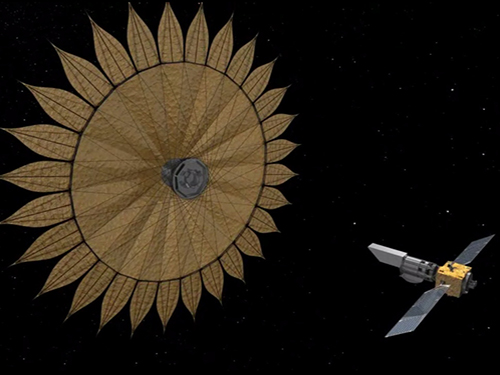
NASA's proposed Starshade Mission, tentatively called EXO-S, would be designed to directly image other habitable planets the size of Earth around the nearest stars and analyze their atmospheres for signs of life.
continuing....


Along with the Thirty Meter Telescope, the almost 40 meter European Extremely Large Telescope (E-ELT) and Giant Magellan Telescope (GMT) pictured above respectively, will be instrumental in the search for life in our Milky Way galaxy.[/b
Tiny, microbial life could be swarming deep below the surface of Mars or swimming in the underground oceans on Saturn's moon Enceladus, but that's not where we're likely to find the first life forms beyond earth.
The bad news is that the first alien life forms humankind will likely discover will be too far away to ever visit. But the great news is that we could detect these exotic beings extremely soon:
"I think we're probably going to be able to detect life on another planet in the next decade or so," Christopher Impey, who is an astronomer at the University of Arizona and author of over a dozen popular science books, told Business Insider. The way we're going to do it is "by exploring exoplanets that we're discovering in large numbers."
Exoplanets are planets that exist outside of our solar system. The closest exoplanet we know of so far is actually orbiting one of the nearest stars Alpha Centauri B about 4.3 light years from earth, but it would take current spacecraft technology well over 100,000 years to reach it.
And now the article goes on to explain why my specific area of interest is in the field of exoplanets and potential exomoons.
Why exoplanets?
Discovering another life force beyond earth is going to be difficult no matter where astronomers look, but exoplanets have several advantages.
First, there are more earth-like exoplanets in our galaxy than in our solar system. Indeed, earth is the only real earth-like planet nearby, with Mars as a close but pretty disappointing second. As of right now, there are over 45 exoplanets in our galaxy thought to be potentially habitable.
Another advantage is that scientists can search for life on exoplanets more inexpensively and efficiently with instruments on earth than searching for them in our solar system.
In contrast, large government agencies like NASA and the European Space Agency will likely have to land a robotic probe on the surface of Jupiter's moon Europa, or some of the other promising places in our solar system, to discover evidence of life. (The one exception could be Saturn's water-rich moon Enceladus.) As of right now, the only lander mission on the books for NASA is their Mars 2020 mission, which won't be able to dig deep enough underground to search for signs of life, Impey suspects. That's why exoplanets are so promising.
"They're billion-dollar, decade-long missions and NASA's budget is so tight that you can only do one big thing at a time," Impey told Business Insider about missions to land a probe on a nearby planet or moon. "I think the project that will get there first is looking for earth-like exoplanets and inspecting their atmospheres."
I tend to agree. Our Earth's atmospheric biomarkers were visible and have been detectable to any nearby planetary systems for 2.5 billion years. This longevity means that we don't need to be just lucky enough to find some stray microbes on Mars or detect ET signals. We just need to observe a lot of exoplanets. Law of Averages.
With powerful telescopes on earth, scientists can sniff out alien life across the galaxy by inspecting the different cocktail of gases in these planets' atmospheres. Only planets with certain key elements and molecules will have the potential to spawn and sustain life.
As I've said here before, the search for life in the universe is a 3-way race between three different groups: Those looking to land probes or even people on other planets in our solar system, those of us who are focused on looking for biomarkers in the spectra of the atmospheres of habitable planets and other habitable environments around other stars and SETI.
If I were going to place a bet which group will win the race I'd bet on those looking for biomarkers because as stated above, it can be done with less money and the technology in this area is expanding rapidly. If nature is kind, then its only a matter of time before there is a headline like "Astronomers detect first living world outside our solar system."

NASA's proposed Starshade Mission, tentatively called EXO-S, would be designed to directly image other habitable planets the size of Earth around the nearest stars and analyze their atmospheres for signs of life.
continuing....
The chemical recipe for life
However, scientists are still debating what that perfect cocktail is.
For example, until last year, the detection of oxygen — an crucial element for life on earth — within an exoplanet's atmosphere would have been an extremely exciting discovery and widely considered a sure sign for life.
But in May, 2014 a pair of researchers — Robin Wordsworth and Raymond Pierrehumbert — suggested that worlds with large amounts of liquid water could still have lots of oxygen but be completely devoid of life. That's because light from the planet's star could have enough energy to separate the hydrogen and oxygen atoms making up water vapor in the atmosphere, where the hydrogen could then escape to space, leaving behind the oxygen.
"Any claims about the remote detection of life beyond the solar system would be open to a lot of close scrutiny," Jack O'Malley-James told New Scientist for an article about the study. "So knowing more about the non-biological sources of atmospheric gases, coupled with methods for ruling those sources out, would help to make those claims more robust."
Although it's unclear exactly what chemicals might show signs of life, Impey says that we should be looking for molecules like ozone (O3) and methane (CH4).
A new fleet of gigantic, revolutionary telescopes
While scientists like Wordsworth and Pierrehumbert are investigating what to look for, astronomers and engineers are working on the tools we'll use in the search for life outside our solar system by building the largest, most powerful telescopes in history.
"[Exoplanets] are far away and they're very faint," Impey told Business Insider. "You need a huge collecting area to get the light from a distance of an earth-like planet."
The collecting area of a telescope refers to the size of the part of the instrument, called the mirror, which collects the light from distant objects. Astronomers will then study this light to detect different chemical signatures in the atmosphere. Similar to how each human has a unique thumbprint, each element has a specific light signature, which astronomers can detect through a method called spectroscopy.
But, it's going to take the most powerful telescopes in history to detect the faint light signatures of these molecules on distant exoplanets. Right now, astronomers at institutes across the globe are building three gigantic, next-generation telescopes, two in Chile and one in Hawaii:


Along with the Thirty Meter Telescope, the almost 40 meter European Extremely Large Telescope (E-ELT) and Giant Magellan Telescope (GMT) pictured above respectively, will be instrumental in the search for life in our Milky Way galaxy.[/b
edit on 9-5-2015 by JadeStar
because: (no reason given)
originally posted by: Kratos40
a reply to: JadeStar
I have a feeling that we may find signs of life on other star systems in the next couple of decades. With the imminent launch of the JWST and other telescopes coming on line soon, we might get that answer. There has to be Type 1 and Type 2 civilizations out there considering the age of the universe.
If they find Earth-like rocky planets with atmospheres containing significant levels of oxygen and CO2, that would be huge news.
You bet it would! I can't wait!!!!!!
a reply to: Kratos40
I agree and think you will see it spring just like planets...once we got a couple good telescopes up there we started seeing planets quite often. Every other week was something about a new planet or new info on that planet....I think itll be the same with life once we figure out the best instruments to use for it.
I agree and think you will see it spring just like planets...once we got a couple good telescopes up there we started seeing planets quite often. Every other week was something about a new planet or new info on that planet....I think itll be the same with life once we figure out the best instruments to use for it.
originally posted by: rockpaperhammock
a reply to: Kratos40
I agree and think you will see it spring just like planets...once we got a couple good telescopes up there we started seeing planets quite often. Every other week was something about a new planet or new info on that planet....I think itll be the same with life once we figure out the best instruments to use for it.
One of my professors off the record said something similar. They said that the first discovery of life on an exoplanets will be kinda like the first discovery of a planet beyond our solar system 20 years ago (the year I was born btw).
They said the discovery was big news among everyone for like a week. Then it was just big news among science in general for a few months, then it was big news in astronomy and planetary science for the next few years and then the exoplanets became so common that now, unless one is particularly interesting their discovery seldom even get a mention outside of academic journals.
Its amazing to me that in just 20 years time we might all be bored with finding another planet with life to add to the dozens in the "Planets With Life Catalog"!
Well, I will never get bored with it.
edit on 9-5-2015 by JadeStar because: (no reason given)
a reply to: JadeStar
So, from a million other possible names, they renamed the Institute for Pale Blue Dots to the Carl Sagan Institute
to explore "Pale Blue Dots and Beyond"? That's the best they could come up with?
They may as well have named it the Carl Sagan Institue for People who can not find Exoplanets Good and Wanna Learn To Do Other Good Stuff Too. I kid. I kid. Unfortunately I can't think of a better name and happened to watch Zoolander last night. Carl Sagan was a visionary who inspired (dare I say it) billions and billions of young people to become astronomers and older people to look up into the night sky and wonder what and who is up there instead of the same ole twinkling lights they have seen nightly their whole lives.
Cosmos literally changed my life. I remember as a thirteen year old and my Dad bringing home the big hardcover book with that mind numbing picture of the reddish stars and (nebula?) on the cover. Science fiction was fun back then, but I wanted to start learning the science part after reading that book. Which then kinda took the fun out of science fiction because then all I would do while reading sci-fi novels would be to think to myself "that's impossible". But luckily for me I learned to enjoy sci-fi again.
Sorry if I offended anyone at the beginning. No disrespect intended. Just poking a little fun.
Mr. Sagan was taken from us much to soon. Just think where we would be if he and his genious way of looking at the universe was still with us?
So, from a million other possible names, they renamed the Institute for Pale Blue Dots to the Carl Sagan Institute
to explore "Pale Blue Dots and Beyond"? That's the best they could come up with?
They may as well have named it the Carl Sagan Institue for People who can not find Exoplanets Good and Wanna Learn To Do Other Good Stuff Too. I kid. I kid. Unfortunately I can't think of a better name and happened to watch Zoolander last night. Carl Sagan was a visionary who inspired (dare I say it) billions and billions of young people to become astronomers and older people to look up into the night sky and wonder what and who is up there instead of the same ole twinkling lights they have seen nightly their whole lives.
Cosmos literally changed my life. I remember as a thirteen year old and my Dad bringing home the big hardcover book with that mind numbing picture of the reddish stars and (nebula?) on the cover. Science fiction was fun back then, but I wanted to start learning the science part after reading that book. Which then kinda took the fun out of science fiction because then all I would do while reading sci-fi novels would be to think to myself "that's impossible". But luckily for me I learned to enjoy sci-fi again.
Sorry if I offended anyone at the beginning. No disrespect intended. Just poking a little fun.
Mr. Sagan was taken from us much to soon. Just think where we would be if he and his genious way of looking at the universe was still with us?
edit on 9-5-2015 by Spader because: Ematicons are being added without my doing so
edit on 9-5-2015 by Spader because: (no
reason given)
a reply to: JadeStar
I agree with you about 'biomarkers' being the likeliest point of discovery for life elsewhere. The odds are obviously in our favour as opposed to physically exploring locations via probes or manned missions. That's not to assume that life won't be found in our system, but it's more pragmatic than waiting for budgets to be approved and allowing for the time it takes to develop technology and travel to local moons.
The Apollo missions will pale in comparison to the, hopefully, inevitable news that we're not alone. Basic or technological, it doesn't matter as long as life is found to out there somewhere.
I agree with you about 'biomarkers' being the likeliest point of discovery for life elsewhere. The odds are obviously in our favour as opposed to physically exploring locations via probes or manned missions. That's not to assume that life won't be found in our system, but it's more pragmatic than waiting for budgets to be approved and allowing for the time it takes to develop technology and travel to local moons.
The Apollo missions will pale in comparison to the, hopefully, inevitable news that we're not alone. Basic or technological, it doesn't matter as long as life is found to out there somewhere.
Great Thread! I was watching the Carl Sagan video and Paredoila hit me (see face pic below). It seems inevitable that they find life. Personally I
already think that life has found us, but will just agree to disagree with those with other beliefs.


edit on 9/5/15 by spirit_horse because: (no reason given)
a reply to: spirit_horse
Well, I will never see that area of our global map the same again! LOL! Just like I responded to JadeStar a few responses back, there has to be some type of Kardashev civilization out there. We will see tell-tale signs of an atmosphere that may be hospital to life...as WE know it. Who's to know that we might find an alien atmosphere full of Cyanide gas and this may support some kind of life.
I am a scientific person by education and training, but a part of me feels like our existence is known and we are being left alone. It's only been a few thousand years from the construction of Gobekli Tepe to humans landing on the Moon. Can you imagine something taking a foot-hold in life that has existed for millions of years that is sentient and intelligent?
Well, I will never see that area of our global map the same again! LOL! Just like I responded to JadeStar a few responses back, there has to be some type of Kardashev civilization out there. We will see tell-tale signs of an atmosphere that may be hospital to life...as WE know it. Who's to know that we might find an alien atmosphere full of Cyanide gas and this may support some kind of life.
I am a scientific person by education and training, but a part of me feels like our existence is known and we are being left alone. It's only been a few thousand years from the construction of Gobekli Tepe to humans landing on the Moon. Can you imagine something taking a foot-hold in life that has existed for millions of years that is sentient and intelligent?
a reply to: JadeStar
Im a huge astronomy nut and have even considered going back to school for another degree but I also enjoy it just fine as a hobby and take free online courses. I have this crazy feeling of wanting to leave earth...as always ...I appreciate your threads.
Im a huge astronomy nut and have even considered going back to school for another degree but I also enjoy it just fine as a hobby and take free online courses. I have this crazy feeling of wanting to leave earth...as always ...I appreciate your threads.
Will the new JWST be concerned with Exoplanets? I thought these telescopes' primary goal is different?
edit on 9-5-2015 by raikata because:
(no reason given)
a reply to: raikata
After looking at the specs of the JWST it will be 1000x stronger than the Hubble. It is more for Deep Space viewing than for looking at individual star systems or planets. Although I have have seen some pics from Hubble showing Jupiter and Saturn and it is very far-sighted. It can't see close up, and I assume JWST will be the same.
Other specialized telescopes and satelites are tuned to analyzing the spectrograms emitted from extra-terrestial atmospheres.
After looking at the specs of the JWST it will be 1000x stronger than the Hubble. It is more for Deep Space viewing than for looking at individual star systems or planets. Although I have have seen some pics from Hubble showing Jupiter and Saturn and it is very far-sighted. It can't see close up, and I assume JWST will be the same.
Other specialized telescopes and satelites are tuned to analyzing the spectrograms emitted from extra-terrestial atmospheres.
originally posted by: Kratos40
a reply to: raikata
After looking at the specs of the JWST it will be 1000x stronger than the Hubble. It is more for Deep Space viewing than for looking at individual star systems or planets.
That's mostly true. It's mostly a VERY GOOD general purpose telescope not a planet finder but.......
Other specialized telescopes and satelites are tuned to analyzing the spectrograms emitted from extra-terrestial atmospheres.
Nope that's also part of the mission of the JWST.
JWST is not going to devote time to looking for new exoplanets. Another NASA mission which launches a year before JWST called TESS (Transiting Exoplanet Survery Satellite) will look for planets around the nearest stars and the best, most enticing worlds will be delivered to JWSTs instruments to characterize them, analyze their atmosphere and who knows, if we're lucky we might even find life with JWST operating in this mode.
So think of TESS as a "finder scope" for JWST

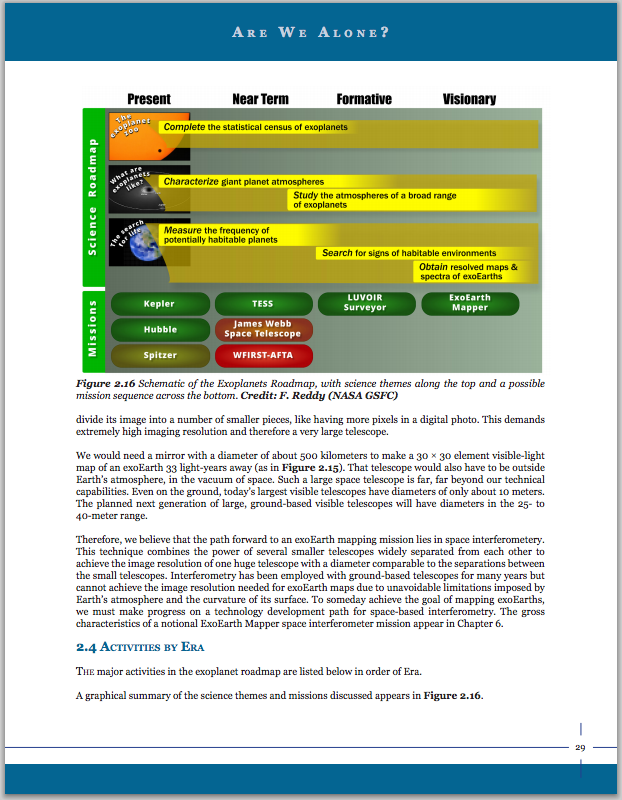
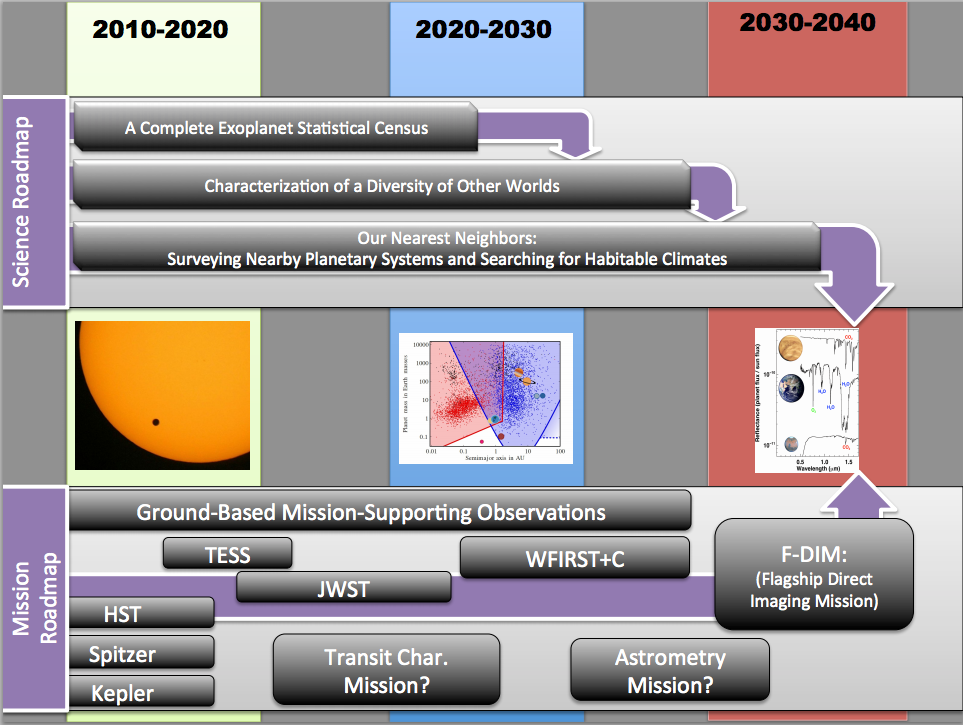
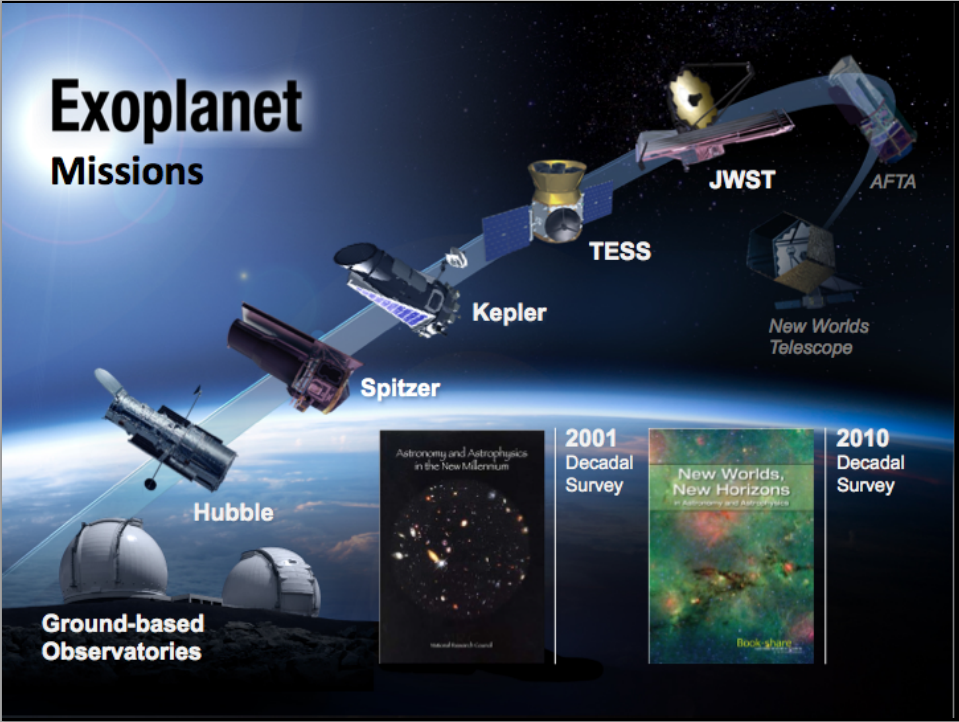
edit on 11-5-2015 by JadeStar because: (no reason given)
By the way, this year is the 25th anniversary of the original "Pale Blue Dot" image. It was taken (at the suggestion of Carl Sagan) by Voyager 1 on
February 14, 1990 as Voyager sped away from its fly-by encounter with Saturn.
In 1990, after Voyager 1 had completed its primary mission, the late great astronomer came up with the idea for Voyager to turn around and take a photograph of Earth across the great expanse of space that was between Voyager and its home starting point, 6 billion kilometers (3.7 billion miles, 40.5 AU) away. Sagan wanted to see an image of the Earth that was only one pixel, to give an indication as to how precarious our existence is, and how precious that existence is.
Carl Sagan talks about the "Pale Blue Dot" in this video. Listening to his words has the really odd effect of making me feel very small, yet somehow very grand at the same time.
Below is the poetic narrative from that video, as written by Carl Sagan and his wife Ann Druyan. Very powerful words:
In 1990, after Voyager 1 had completed its primary mission, the late great astronomer came up with the idea for Voyager to turn around and take a photograph of Earth across the great expanse of space that was between Voyager and its home starting point, 6 billion kilometers (3.7 billion miles, 40.5 AU) away. Sagan wanted to see an image of the Earth that was only one pixel, to give an indication as to how precarious our existence is, and how precious that existence is.
Carl Sagan talks about the "Pale Blue Dot" in this video. Listening to his words has the really odd effect of making me feel very small, yet somehow very grand at the same time.
Below is the poetic narrative from that video, as written by Carl Sagan and his wife Ann Druyan. Very powerful words:
From this distant vantage point, the Earth might not seem of any particular interest. But for us, it's different. Consider again that dot. That's here. That's home. That's us. On it everyone you love, everyone you know, everyone you ever heard of, every human being who ever was, lived out their lives. The aggregate of our joy and suffering, thousands of confident religions, ideologies, and economic doctrines, every hunter and forager, every hero and coward, every creator and destroyer of civilization, every king and peasant, every young couple in love, every mother and father, hopeful child, inventor and explorer, every teacher of morals, every corrupt politician, every "superstar," every "supreme leader," every saint and sinner in the history of our species lived there – on a mote of dust suspended in a sunbeam.
The Earth is a very small stage in a vast cosmic arena. Think of the rivers of blood spilled by all those generals and emperors so that in glory and triumph they could become the momentary masters of a fraction of a dot. Think of the endless cruelties visited by the inhabitants of one corner of this pixel on the scarcely distinguishable inhabitants of some other corner. How frequent their misunderstandings, how eager they are to kill one another, how fervent their hatreds. Our posturings, our imagined self-importance, the delusion that we have some privileged position in the universe, are challenged by this point of pale light. Our planet is a lonely speck in the great enveloping cosmic dark. In our obscurity – in all this vastness – there is no hint that help will come from elsewhere to save us from ourselves.
The Earth is the only world known, so far, to harbor life. There is nowhere else, at least in the near future, to which our species could migrate. Visit, yes. Settle, not yet. Like it or not, for the moment, the Earth is where we make our stand. It has been said that astronomy is a humbling and character-building experience. There is perhaps no better demonstration of the folly of human conceits than this distant image of our tiny world. To me, it underscores our responsibility to deal more kindly with one another and to preserve and cherish the pale blue dot, the only home we've ever known.
—Carl Sagan, Pale Blue Dot: A Vision of the Human Future in Space
edit on 5/12/2015 by Soylent Green Is People because: (no reason given)
new topics
-
When an Angel gets his or her wings
Religion, Faith, And Theology: 49 minutes ago -
Comparing the theology of Paul and Hebrews
Religion, Faith, And Theology: 1 hours ago -
Pentagon acknowledges secret UFO project, the Kona Blue program | Vargas Reports
Aliens and UFOs: 2 hours ago -
Boston Dynamics say Farewell to Atlas
Science & Technology: 2 hours ago -
I hate dreaming
Rant: 3 hours ago -
Man sets himself on fire outside Donald Trump trial
Mainstream News: 5 hours ago -
Biden says little kids flip him the bird all the time.
Politicians & People: 5 hours ago -
The Democrats Take Control the House - Look what happened while you were sleeping
US Political Madness: 6 hours ago -
Sheetz facing racial discrimination lawsuit for considering criminal history in hiring
Social Issues and Civil Unrest: 6 hours ago -
In an Historic First, In N Out Burger Permanently Closes a Location
Mainstream News: 8 hours ago
top topics
-
The Democrats Take Control the House - Look what happened while you were sleeping
US Political Madness: 6 hours ago, 16 flags -
In an Historic First, In N Out Burger Permanently Closes a Location
Mainstream News: 8 hours ago, 14 flags -
A man of the people
Medical Issues & Conspiracies: 13 hours ago, 8 flags -
Biden says little kids flip him the bird all the time.
Politicians & People: 5 hours ago, 8 flags -
Man sets himself on fire outside Donald Trump trial
Mainstream News: 5 hours ago, 7 flags -
Pentagon acknowledges secret UFO project, the Kona Blue program | Vargas Reports
Aliens and UFOs: 2 hours ago, 5 flags -
4 plans of US elites to defeat Russia
New World Order: 15 hours ago, 4 flags -
Sheetz facing racial discrimination lawsuit for considering criminal history in hiring
Social Issues and Civil Unrest: 6 hours ago, 3 flags -
Are you ready for the return of Jesus Christ? Have you been cleansed by His blood?
Religion, Faith, And Theology: 10 hours ago, 3 flags -
Boston Dynamics say Farewell to Atlas
Science & Technology: 2 hours ago, 3 flags
active topics
-
The Democrats Take Control the House - Look what happened while you were sleeping
US Political Madness • 60 • : Dandandat3 -
I hate dreaming
Rant • 5 • : ScarletDarkness -
Man sets himself on fire outside Donald Trump trial
Mainstream News • 32 • : cherokeetroy -
Pentagon acknowledges secret UFO project, the Kona Blue program | Vargas Reports
Aliens and UFOs • 5 • : Ophiuchus1 -
-@TH3WH17ERABB17- -Q- ---TIME TO SHOW THE WORLD--- -Part- --44--
Dissecting Disinformation • 546 • : MetalThunder -
Boston Dynamics say Farewell to Atlas
Science & Technology • 4 • : Terpene -
12 jurors selected in Trump criminal trial
US Political Madness • 111 • : WeMustCare -
Election Year 2024 - Interesting Election-Related Tidbits as They Happen.
2024 Elections • 68 • : WeMustCare -
Candidate TRUMP Now Has Crazy Judge JUAN MERCHAN After Him - The Stormy Daniels Hush-Money Case.
Political Conspiracies • 401 • : WeMustCare -
So I saw about 30 UFOs in formation last night.
Aliens and UFOs • 36 • : Arbitrageur
11

